The Great Ziegfeld is a american film of genre Drama directed by Robert Z. Leonard released in USA on 8 april 1936 with William Powell
The Great Ziegfeld (1936)
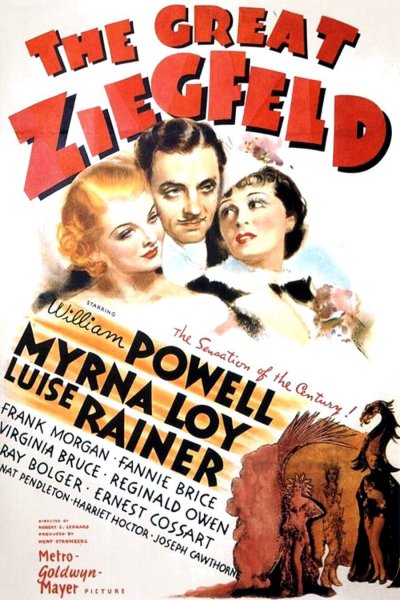
If you like this film, let us know!
- Infos
- Casting
- Technical infos
- Photos
- Videos
- Film quotes
- Characters
- Music
- Awards
The Great Ziegfeld is a 1936 American musical drama film directed by Robert Z. Leonard and produced by Hunt Stromberg. It stars William Powell as the theatrical impresario Florenz "Flo" Ziegfeld, Jr., Luise Rainer as Anna Held, and Myrna Loy as Billie Burke.
The film, shot at MGM Studios in Culver City, California in the fall of 1935, is a fictionalized tribute to Florenz Ziegfeld, Jr. and a cinematic adaption of Broadway's Ziegfeld Follies, with highly elaborate costumes, dances and sets. Many of the performers of the theatrical Ziegfeld Follies were cast in the film as themselves, including Fanny Brice and Harriet Hoctor, and Billie Burke acted as a supervisor for the film. The "A Pretty Girl Is Like a Melody" set alone was reported to have cost US$220,000 (US$3 738 945 in 2015 dollars), featuring a towering rotating volute of 70 ft (21 m) diameter with 175 spiral steps, weighing 100 tons. The music to the film was provided by Walter Donaldson, Irving Berlin, and lyricist Harold Adamson, with choreographed scenes. The extravagant costumes were designed by Adrian, taking some 250 tailors and seamstresses six months to prepare them using 50 pounds (23 kg) of silver sequins and 12 yards (11 m) of white ostrich plumes. Over a thousand people were employed in the production of the film, which required 16 reels of film after the cutting.
One of the biggest successes in film in the 1930s and the pride of MGM at the time, it was acclaimed as the greatest musical biography to be made in Hollywood and still remains a standard in musical film making. It won three Academy Awards, including Best Picture for producer Hunt Stromberg, Best Actress for Luise Rainer, and Best Dance Direction for Seymour Felix, and was nominated for four others. Although the film is still praised for its lavish production and as a symbol of glamor and excess during the Golden Age of Hollywood, today The Great Ziegfeld is generally seen less favorably and is considered by many critics to be excessively showy and long at just under three hours.
MGM made two more Ziegfeld films – one entitled Ziegfeld Girl (1941), starring James Stewart, Judy Garland, Hedy Lamarr, and Lana Turner, which recycled some film from The Great Ziegfeld, and in 1946, Ziegfeld Follies by Vincente Minnelli. In 1951, they produced their Technicolor remake of Show Boat, which Ziegfeld had presented as a stage musical.
Synopsis
The son of a highly respected music professor, Florenz "Flo" Ziegfeld, Jr. yearns to make his mark in show business. He begins by promoting Eugen Sandow, the "world's strongest man", at the 1893 Chicago World's Fair, overcoming the competition of rival Billings and his popular attraction, belly dancer Little Egypt, with savvy marketing (allowing women to feel Sandow's muscles).Actors
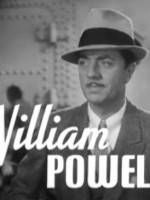
William Powell
(Florenz 'Flo' Ziegfeld Jr.)
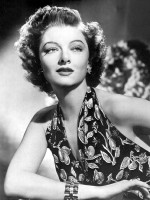
Myrna Loy
(Billie Burke)

Luise Rainer
(Anna Held)

Frank Morgan
(Billings)
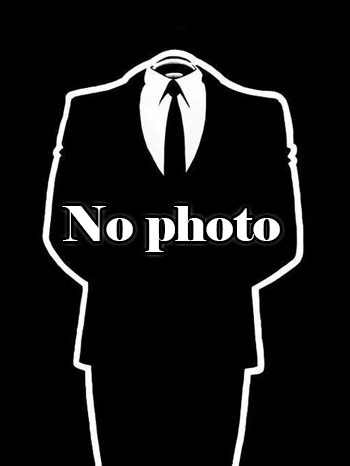
Toni Mannix
Comments
Leave comment :
Suggestions of similar film to The Great Ziegfeld
There are 259 films with the same actors, 98 films with the same director, 71413 with the same cinematographic genres (including 56 with exactly the same 4 genres than The Great Ziegfeld), 6745 films with the same themes (including 4359 films with the same 2 themes than The Great Ziegfeld), to have finally 70 suggestions of similar films.If you liked The Great Ziegfeld, you will probably like those similar films :

Naughty Marietta (1935)
, 1h45Directed by W. S. Van Dyke, Robert Z. Leonard
Origin USA
Genres Drama, Musical, Romance
Themes Seafaring films, Films about music and musicians, Transport films, Pirate films, Musical films, Operetta films
Actors Jeanette MacDonald, Nelson Eddy, Elsa Lanchester, Douglass Dumbrille, Joseph Cawthorn, Frank Morgan
Rating64%





To avoid an arranged marriage to Don Carlos, an elderly Spanish duke, Princess Marie masquerades as her uncle's former servant, Marietta, and escapes from France on a ship with casquette girls who are traveling to New Orleans to marry colonists. On board, Marietta befriends Julie.
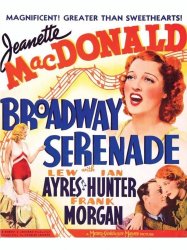
Broadway Serenade (1939)
, 1h54Directed by Robert Z. Leonard
Origin USA
Genres Drama, Musical, Romance
Themes Films about music and musicians, Musical films
Actors Jeanette MacDonald, Lew Ayres, Ian Hunter, Frank Morgan, Wally Vernon, Rita Johnson
Rating57%





À New York, la chanteuse Mary Hale (Jeanette MacDonald) et son mari le pianiste-compositeur Jimmy Seymour (Lew Ayres) vivotent dans des boîtes de nuit, lorsque Mary est remarquée par Larry Bryant (Ian Hunter), producteur à Broadway. Il lui obtient une audition auprès de Cornelius Collier Jr. (Frank Morgan) qui se prépare à monter son prochain spectacle. Séduit à son tour par la voix de la jeune femme, il l'engage...
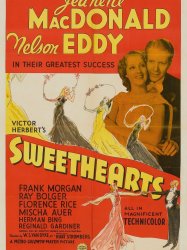
Sweethearts (1938)
, 1h54Directed by W. S. Van Dyke, Robert Z. Leonard
Origin USA
Genres Comedy, Musical theatre, Musical
Themes Films about music and musicians, Musical films
Actors Jeanette MacDonald, Nelson Eddy, Frank Morgan, Ray Bolger, Mischa Auer, Florence Rice
Rating61%





Broadway stars Gwen Marlow (Jeanette MacDonald) and Ernest Lane (Nelson Eddy) are appearing in a 6-year run of Victor Herbert's operetta Sweethearts (Ray Bolger dances the role of Hans). They are also very much in love after six years of marriage. Norman Trumpett (Reginald Gardiner) is a successful Hollywood talent scout under pressure to recruit Marlow and Lane for his studio, which their Broadway producer Felix Lehman (Frank Morgan) is equally determined to prevent.
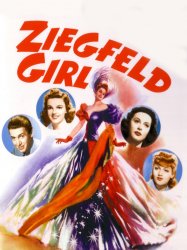
Ziegfeld Girl (1941)
, 2h12Directed by Busby Berkeley, Robert Z. Leonard
Origin USA
Genres Drama, Musical, Romance
Themes Dance films, Films about music and musicians, Musical films
Actors James Stewart, Judy Garland, Hedy Lamarr, Lana Turner, Tony Martin, Jackie Cooper
Rating66%





The story deals with three showbiz hopefuls - Susan Gallagher (Judy Garland), Sandra Kolter (Hedy Lamarr) and Sheila Regan (Lana Turner) - and their efforts to attain the lofty status of "Ziegfeld Girl."
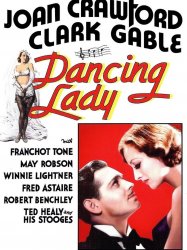
Dancing Lady (1933)
, 1h32Directed by Robert Z. Leonard
Origin USA
Genres Drama, Comedy, Romantic comedy, Musical, Romance
Themes Dance films, Films about music and musicians, Musical films, Buddy films
Actors Joan Crawford, Clark Gable, Franchot Tone, Robert Benchley, Nelson Eddy, Winnie Lightner
Rating66%





Janie Barlow (Joan Crawford) is a young dancer who is reduced to stripping in a burlesque show. Arrested for indecent exposure, she's bailed out by millionaire playboy Tod Newton (Franchot Tone), who was attracted to her while slumming at the theatre with his society pals. When she tries to get a part in a Broadway musical, Tod intercedes with director Patch Gallagher (Clark Gable) to get her the job: he'll put his money into the show, if Janie is given a part in the chorus. Even though he needs the money, Patch is resistant, until he sees Janie dance and realizes her talent.

The Girl of the Golden West (1938)
, 2h1Directed by Robert Z. Leonard
Origin USA
Genres Drama, Musical theatre, Musical, Romance, Western
Themes Films about music and musicians, Musical films, Films based on plays, Films based on operas
Actors Jeanette MacDonald, Nelson Eddy, Walter Pidgeon, Leo Carrillo, Buddy Ebsen, Priscilla Lawson
Rating62%






Maytime (1937)
, 1h40Directed by Robert Z. Leonard
Origin USA
Genres Drama, Musical, Romance
Themes Films about music and musicians, Musical films, Films based on operas
Actors Jeanette MacDonald, Nelson Eddy, John Barrymore, Russell Hicks, Frank Puglia, Sig Ruman
Rating72%





At a small town May Day celebration, elderly Miss Morrison (Jeanette MacDonald) tries to console her young friend Kip (Tom Brown), whose sweetheart Barbara (Lynne Carver) has been offered a job on the operatic stage. Later Barbara goes for comfort to Miss Morrison, who reveals that years ago she was the internationally famous opera diva Marcia Mornay. Miss Morrison then relates her story: Marcia, a young American singer in Paris, is guided to success by famed voice teacher Nicolai Nazaroff (John Barrymore), who introduces her at the court of Louis Napoleon. That night, Nicolai proposes to Marcia and she accepts, even though they both know that she is not in love with him. Later, feeling restless, Marcia takes a ride, and is stranded in the Latin Quarter when her driver's horse runs away. In a tavern, she meets American Paul Allison (Nelson Eddy), who is also a singer, but not as ambitious as Marcia. Though they are attracted to each other, she at first refuses to see him again out of loyalty to Nicolai, but soon promises to lunch with him the next day. They enjoy their lunch together, but Marcia again says that they can no longer see each other and leaves. Paul then steals tickets to see her perform The Huguenots that evening, and after he is thrown out of his seat by the manager, he goes to her dressing room and only leaves when she promises to join him at St. Cloud for a May Day celebration. During the celebration, Paul tells her he loves her, but she says that she owes Nicolai too much and could never break a promise to him. They then part after vowing always to remember their day together.
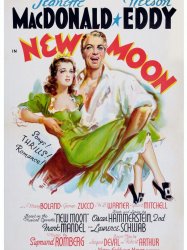
New Moon (1940)
, 1h45Directed by W. S. Van Dyke, Robert Z. Leonard
Origin USA
Genres Musical theatre, Adventure, Musical, Romance
Themes Films about music and musicians, Musical films, Operetta films
Actors Jeanette MacDonald, Nelson Eddy, Mary Boland, George Zucco, Ivan F. Simpson, H. B. Warner
Rating66%





During the 18th century in New Orleans, Louisiana, a French nobleman in disguise as a bondsman, Charles (Nelson Eddy) leads his fellow bondsman in revolt against his ship's captain, commandeering the ship and heading out to sea.
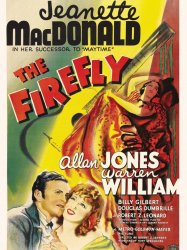
The Firefly (1937)
, 2h11Directed by Robert Z. Leonard, Joseph M. Newman
Origin USA
Genres Drama, Historical, Musical
Themes Films about music and musicians, Musical films, Political films, Napoleonic Wars films, French Revolution films, Operetta films
Actors Jeanette MacDonald, Allan Jones, Warren William, Billy Gilbert, Douglass Dumbrille, Henry Daniell
Rating67%





Secret agent Nina Maria Azara (Jeanette MacDonald) is working undercover for the King of Spain (Tom Rutherford) as a singer known as the "Mosca del Fuego" or "Firefly." Despite her love for Captain Andre (Allan Jones), she tricks him so that his general will change the French defensive positions, thus allowing the Duke of Wellington to win the Battle of Vitoria. In the end Nina and Andre leave together for a new life in peace.

Kelly and Me (1957)
, 1h26Directed by Robert Z. Leonard
Origin USA
Genres Drama, Comedy, Musical
Themes Films about music and musicians, Musical films
Actors Van Johnson, Piper Laurie, Martha Hyer, Onslow Stevens, Herbert Anderson, Douglas Fowley
Rating59%





Un acteur de vaudeville raté est « adopté » par Kelly, un chien spécialement dressé, qui l'aide dans sa carrière aux débuts du cinéma parlant à Jersey City.
 Connection
Connection